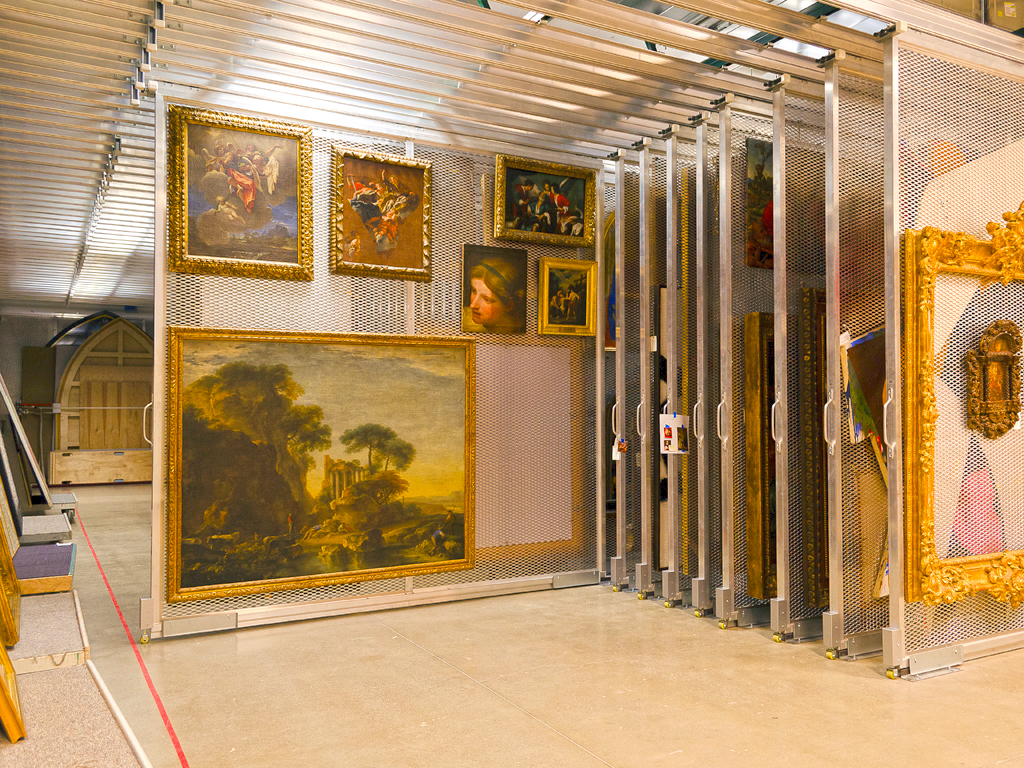1. Understand the Unique Needs of Your Artwork
Before you dive into storage solutions, it’s important to understand that different types of artwork have different needs:
-
Paintings: Oils, acrylics, and watercolors each have unique requirements in terms of humidity, temperature, and light exposure.
-
Works on Paper: These are particularly sensitive to environmental factors and require careful handling.
-
Sculptures and 3D Art: These pieces may need special shelving or supports to prevent damage.
-
Textiles: Fabrics and textiles should be stored in a way that prevents creasing and potential degradation.
2. Climate Control: The Foundation of Art Preservation
Climate control is the cornerstone of any art storage solution. Artworks are vulnerable to fluctuations in temperature and humidity, which can cause warping, mold growth, and deterioration.
-
Temperature: Maintain a consistent temperature between 65-70°F (18-21°C). Avoid areas with extreme temperature changes.
-
Humidity: Aim for a relative humidity of 40-50%. High humidity can lead to mold, while low humidity can cause paper and wood to dry out and become brittle.
Investing in a climate-controlled storage unit or incorporating dehumidifiers and air conditioners into your home can make a significant difference in preserving your artwork.
3. Proper Framing and Mounting
How you frame and mount your artwork plays a crucial role in its preservation:
-
Acid-Free Materials: Use acid-free matting and backing boards to prevent chemical reactions that can damage your artwork.
-
UV-Filtering Glass: For framed pieces, UV-filtering glass or acrylic can protect against light damage.
-
Avoiding Direct Contact: Ensure that artwork does not come into direct contact with the glass or acrylic by using spacers.
4. Storage Solutions for Different Types of Art
-
Paintings: Store paintings upright in a climate-controlled room, ideally in custom-built racks or on padded shelves to prevent them from leaning against each other.
-
Works on Paper: Keep works on paper flat in archival-quality folders or boxes. Consider using protective sleeves to further shield them from dust and light.
-
Sculptures: Display sculptures on sturdy shelves or in custom-made display cases. Ensure they are securely mounted to prevent tipping or falling.
-
Textiles: Roll textiles loosely around a large, acid-free tube and store them in a breathable, acid-free container.
5. Regular Maintenance and Inspections
Even with the best storage practices, regular maintenance is essential:
-
Inspect Periodically: Check your artwork every few months for signs of damage or deterioration.
-
Clean Carefully: Dust frames and surfaces gently with a soft brush. Avoid using harsh chemicals that could damage the artwork.
-
Consult Professionals: For valuable or particularly delicate pieces, consider consulting a conservator for advice on maintenance and repair.
6. Digital Documentation
In addition to physical preservation, maintaining a digital record of your artwork can be invaluable:
-
High-Resolution Photographs: Take detailed, high-resolution photos of each piece.
-
Detailed Records: Keep a detailed record of each artwork, including its condition, provenance, and any conservation work done.
7. Insurance and Documentation
Protecting your investment includes having adequate insurance coverage:
-
Appraisals: Regularly appraise your artwork to ensure your insurance coverage matches its current value.
-
Insurance: Obtain a policy that specifically covers art, including protection against damage, theft, and loss.
